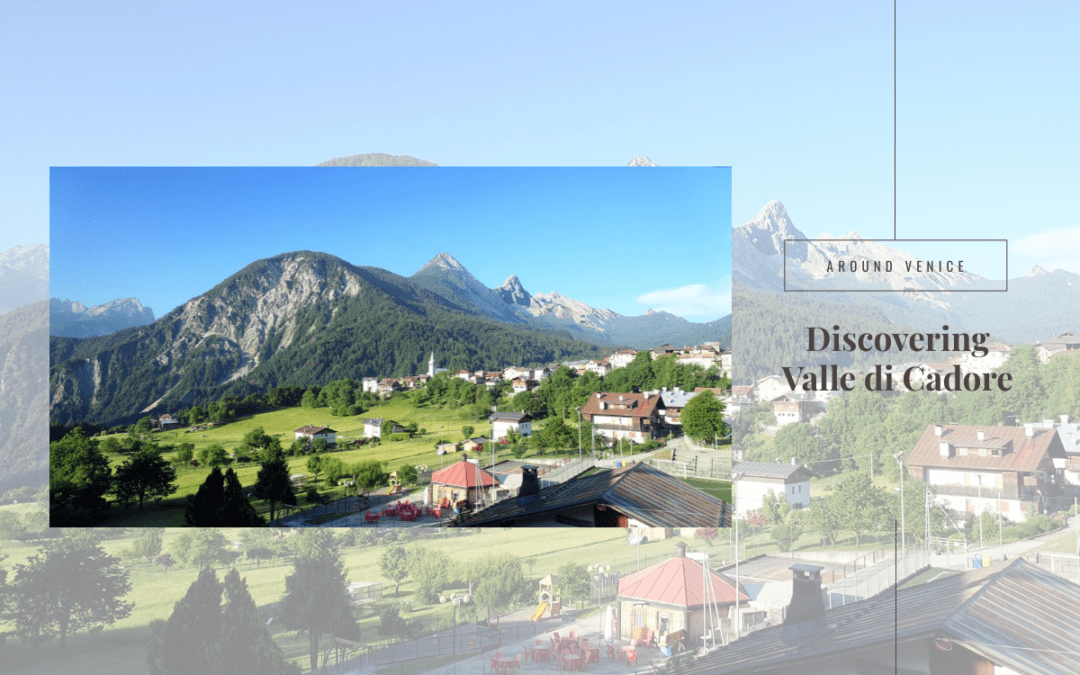Valle di Cadore is a pretty mountain village on the slopes of Mount Antelao overlooking the majestic Duranno range, embracing the towns of Venas and Vallesina.
It has very ancient origins and one of its characteristics is the “Borgata Costa”, developed right along the Via Claudia Augusta, which stands out for the richness of historical and patrician buildings.
Three points of interest not to be missed in Valle di Cadore
Borgata Costa
It is about 10 minutes from the ATVO bus stop, the transport company that also connects Cortina to Venice and stops right in Valle di Cadore.
It can be recognised by an octagonal stone fountain, located in front of the street, one of the few functioning octagonal fountains still present in Cadore. Borgata Costa starts right at the beginning of the Roman Road and stands out for its historic buildings that are full of interesting construction details, such as portals and hand-worked railings.
Borgo Damòs
About 30 minutes walk from Valle di Cadore, passing by the Rualan bridge, is this village currently inhabited by a single family.
Here there is a flourishing farm of medicinal herbs and the beautiful church of San Giovanni e Andrea, dating back to the fourteenth century, with the small cemetery, where the inhabitants of the village rest.
Palazzo Piloni-Costantini
In Via XX Settembre 77, the fifteenth-century Palazzo Piloni-Costantini overlooks the Borgata Costa and is one of the symbols of the town of Valle di Cadore: to admire the tri-lobed mullioned window and the noble coat of arms placed above the entrance.
The Royal Road that went up from the Piave Valley towards Cortina and Pusteria, entered the road axis just below the south-facing façade.
Two routes not to be missed
The Long Route of the Dolomites
Valle di Cadore is located along the path of one of the most fascinating cycle paths in Europe, called “Lunga via delle Dolomiti“. The cycle path that runs the entire length of the town, in fact, is part of this cycle path, as well as the “Ciclovia dell’Amicizia“, the route from Munich to Venice.
The section that concerns Valle di Cadore opens towards Tai to the East and towards Vodo to the West, passing through Venas; it is flat and paved throughout the route.
The route, having been part of the spectacular railway that led from Calalzo to Cortina, offers a privileged observation point from above over all the districts of the area. Along the route, from the curving bridge over the Vallesina River, you can admire and visit a restored and still functioning water mill.
The Borgata Costa (or Via Romana)
It is an easy walk, which develops along the ancient Via Romana Claudia Augusta, dominated to the north by the fifteenth-century Palazzo Piloni-Costantini.
Along its entire length it is divided into two: on the one side, the houses of the noble families of the past and on the opposite side the more rustic houses, in stone and wood, with the stables on the ground floor. The historic buildings belonging to the noble families are rich in pleasant and particular construction details, such as portals and hand-worked railings.
Noteworthy stone arches from one house to the next constitute an opening towards Pian de Val, whose fields were cultivated in the past with potatoes, hemp and beans.
A must-attend event
The journey into the past
Also known as the “Festival of the Coastal Village“, this event has been held for over twenty years, on the third weekend of July in Valle di Cadore.
It is an exhibition of traditional arts and crafts, which have now almost been lost, such as the art of making “scarpet,” shoes.
And so, there you have it, what are you waiting for to book your ATVO ticket to Valle di Cadore?




